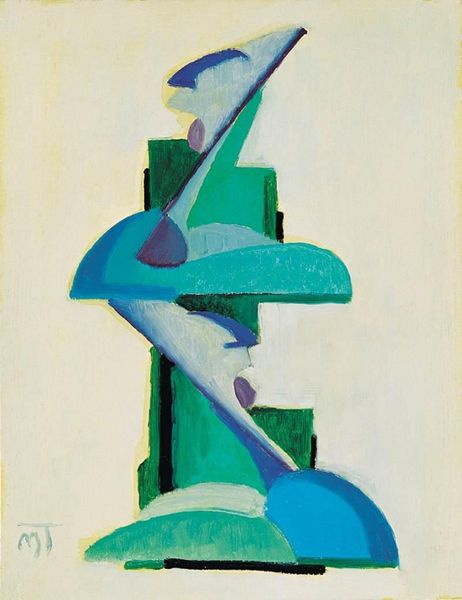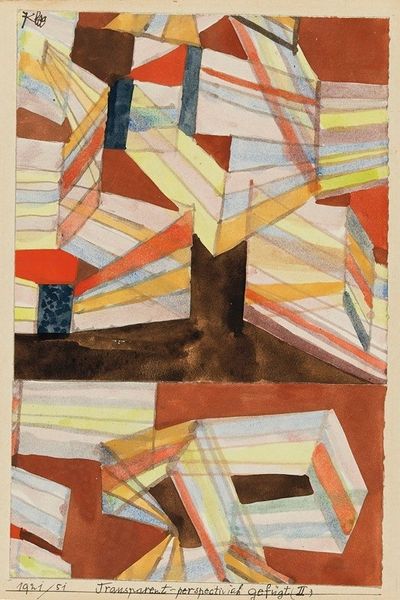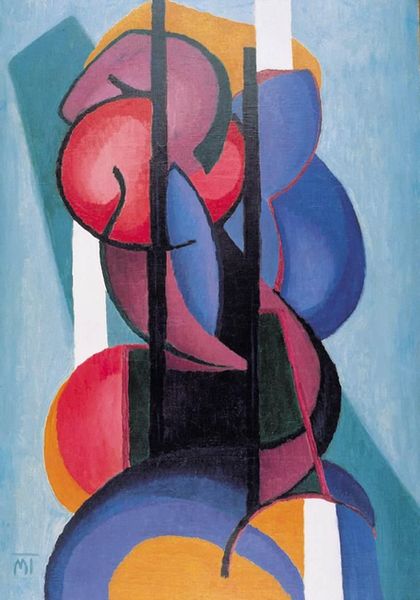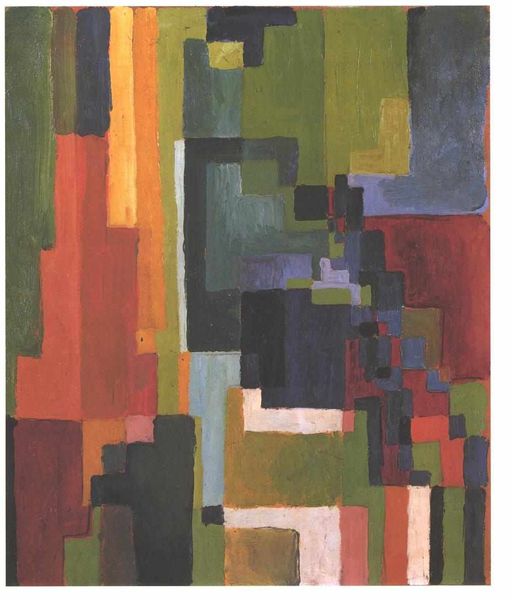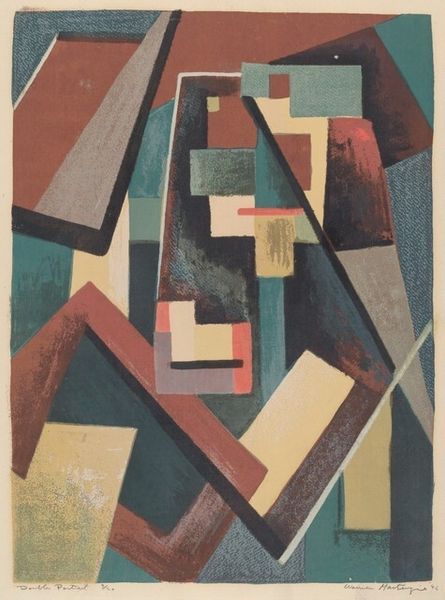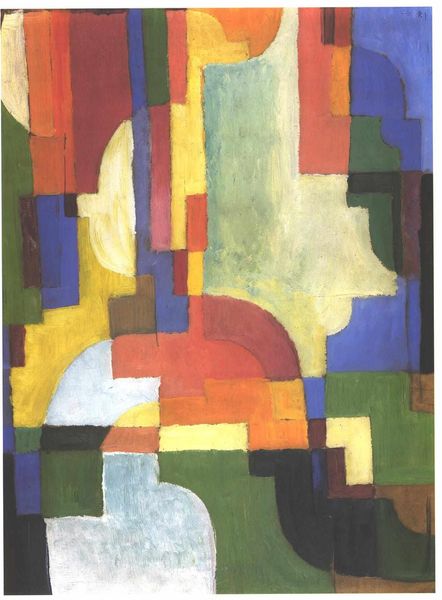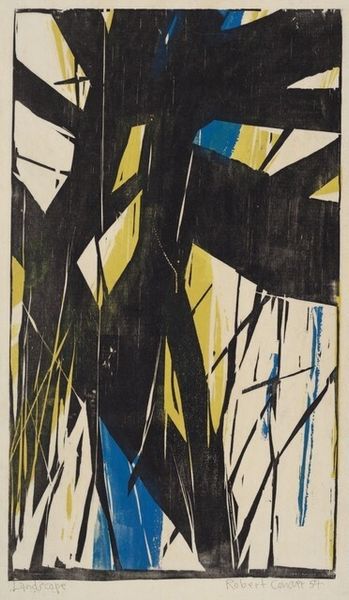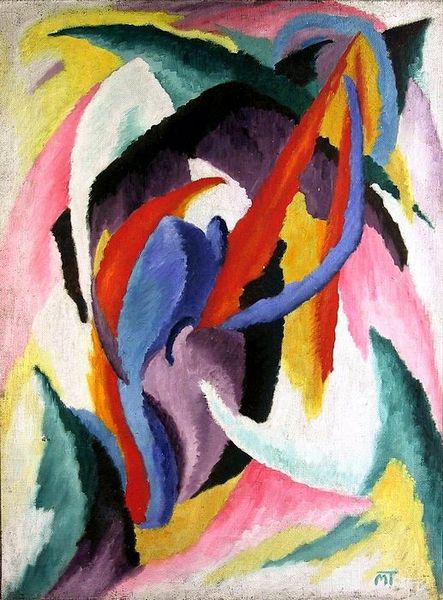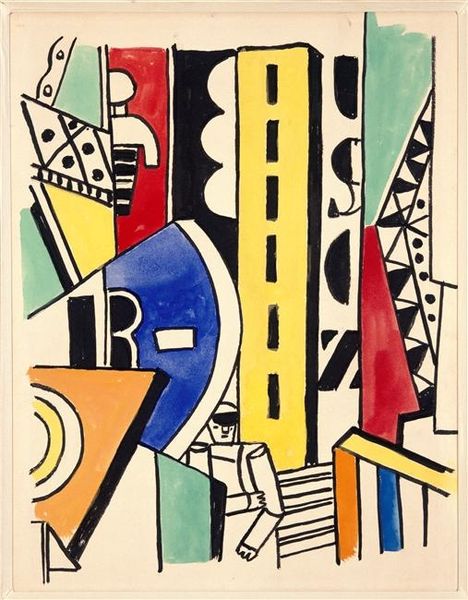
painting, oil-paint
#
cubism
#
acrylic
#
painting
#
oil-paint
#
painted
#
oil painting
#
geometric
#
abstraction
#
modernism
Copyright: Janos Mattis-Teutsch,Fair Use
Editor: We’re looking at “Composition,” an oil painting created by Janos Mattis-Teutsch in 1925. It's strikingly geometric. The color palette is vivid and bold, almost jewel-toned. What elements jump out at you when you look at this piece? Curator: The dynamism arises primarily from the interplay between form and color. Observe how Mattis-Teutsch uses contrasting hues—the sharp red against the cooler blues and greens—to generate visual tension. Note the arrangement of shapes. Do you perceive a hierarchical structure? Editor: I see a kind of vertical rise, almost like a stylized building or a growing plant. The dark shapes at the top contrast with the softer, rounded forms at the bottom. Curator: Precisely. The structure, you'll notice, transcends mere representation. The forms don't signify something literal. Rather, it directs the viewer’s eye and establishes a sense of progression. This push and pull embodies the artist's intent. Now, how does the materiality contribute to its aesthetic? Editor: I notice that the oil paint seems thickly applied in some areas. The texture appears quite tactile and substantial, giving the artwork depth. Curator: A perceptive observation. That impasto technique emphasizes the materiality and reinforces the painting’s presence as an object, rather than an illusionistic window onto another world. How does that challenge traditional notions of painting, in your opinion? Editor: It makes the paint itself the subject, alongside the composition, which draws attention to the act of painting itself and shifts away from a narrative. I hadn’t considered the importance of texture here until now. Curator: Indeed, that interplay is pivotal. Close visual inspection, aided by theory, is key to unlock paintings. I hope I shed a bit of light here. Editor: Absolutely. Thinking about the artwork's structure and its materials helps in forming my own analysis, too!
Comments
No comments
Be the first to comment and join the conversation on the ultimate creative platform.
